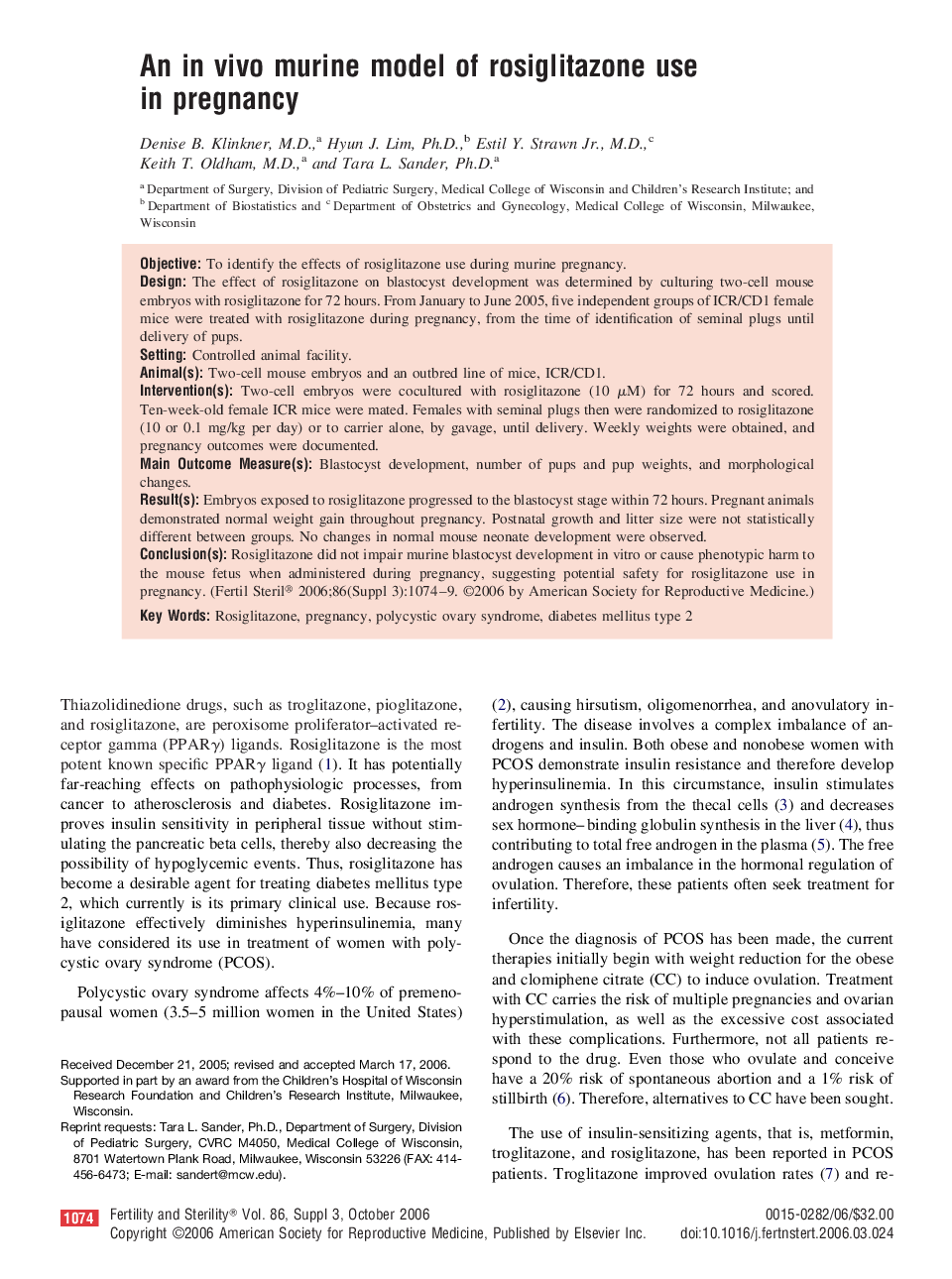| Article ID | Journal | Published Year | Pages | File Type |
|---|---|---|---|---|
| 3940777 | Fertility and Sterility | 2006 | 6 Pages |
ObjectiveTo identify the effects of rosiglitazone use during murine pregnancy.DesignThe effect of rosiglitazone on blastocyst development was determined by culturing two-cell mouse embryos with rosiglitazone for 72 hours. From January to June 2005, five independent groups of ICR/CD1 female mice were treated with rosiglitazone during pregnancy, from the time of identification of seminal plugs until delivery of pups.SettingControlled animal facility.Animal(s)Two-cell mouse embryos and an outbred line of mice, ICR/CD1.Intervention(s)Two-cell embryos were cocultured with rosiglitazone (10 μM) for 72 hours and scored. Ten-week-old female ICR mice were mated. Females with seminal plugs then were randomized to rosiglitazone (10 or 0.1 mg/kg per day) or to carrier alone, by gavage, until delivery. Weekly weights were obtained, and pregnancy outcomes were documented.Main Outcome Measure(s)Blastocyst development, number of pups and pup weights, and morphological changes.Result(s)Embryos exposed to rosiglitazone progressed to the blastocyst stage within 72 hours. Pregnant animals demonstrated normal weight gain throughout pregnancy. Postnatal growth and litter size were not statistically different between groups. No changes in normal mouse neonate development were observed.Conclusion(s)Rosiglitazone did not impair murine blastocyst development in vitro or cause phenotypic harm to the mouse fetus when administered during pregnancy, suggesting potential safety for rosiglitazone use in pregnancy.
